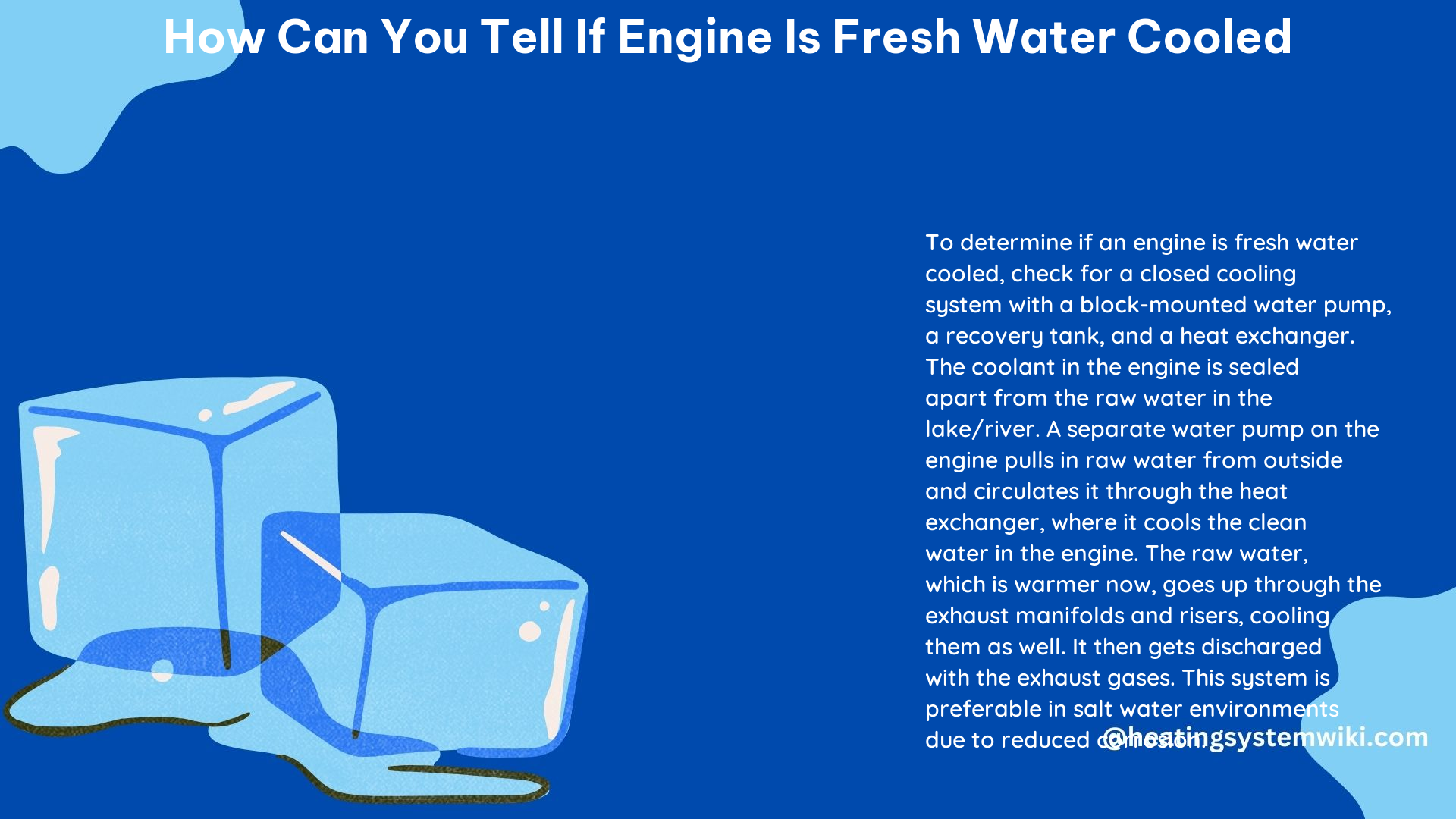To determine if an engine is fresh water cooled, there are several key factors to consider. Fresh water cooling systems use a reservoir of fresh water that is circulated through the engine and then cooled, typically with a radiator or heat exchanger. In contrast, raw water cooling systems draw in water from the surrounding environment (such as seawater or lake water) and circulate it directly through the engine without the use of a reservoir.
Identifying Fresh Water Cooled Engines
Coolant Recovery Tank or Expansion Tank
One of the most reliable ways to identify a fresh water cooled engine is to check for the presence of a coolant recovery tank or expansion tank. This tank is typically located on the top or side of the engine and is used to store the coolant and allow for expansion and contraction as the engine heats up and cools down. The tank may be made of plastic or metal and will have hoses or lines connected to it that circulate the coolant between the engine and the radiator or heat exchanger.
Engine Block Design
Another way to tell if an engine is fresh water cooled is to examine the engine block itself. Fresh water cooled engines often have a block that is designed to hold coolant, which may be a mixture of water and antifreeze. The block may have passages or channels that allow the coolant to flow through and around the engine, ensuring even cooling and temperature distribution.
In contrast, raw water cooled engines do not have a coolant recovery tank or expansion tank, and the engine block is not designed to hold coolant. Instead, raw water is drawn directly into the engine and circulated through it, often with the help of a pump. The raw water then exits the engine and is discharged overboard.
Coolant Circulation Hoses and Lines
Fresh water cooled engines may also have hoses or lines that circulate the coolant between the engine and the radiator or heat exchanger. These hoses or lines are typically made of rubber or reinforced plastic and are used to transport the heated coolant from the engine to the radiator or heat exchanger, where it is cooled before being circulated back to the engine.
Combination Cooling Systems

It is important to note that some engines may use a combination of fresh water and raw water cooling. For example, an engine may use fresh water to cool the engine block and raw water to cool the exhaust manifolds and risers. In these cases, it is still possible to tell if the engine is fresh water cooled by looking for the presence of a coolant recovery tank or expansion tank, as well as checking the engine block for passages or channels that allow the coolant to flow through.
Technical Specifications
| Specification | Fresh Water Cooled Engine | Raw Water Cooled Engine |
|---|---|---|
| Cooling System | Uses a reservoir of fresh water that is circulated through the engine and then cooled, typically with a radiator or heat exchanger. | Draws in water from the surrounding environment (such as seawater or lake water) and circulates it directly through the engine without the use of a reservoir. |
| Coolant Recovery Tank or Expansion Tank | May have a coolant recovery tank or expansion tank to store the coolant and allow for expansion and contraction. | Does not have a coolant recovery tank or expansion tank. |
| Engine Block Design | Engine block is designed to hold coolant, which may be a mixture of water and antifreeze, and has passages or channels that allow the coolant to flow through and around the engine. | Engine block is not designed to hold coolant. |
| Coolant Circulation | May have hoses or lines that circulate the coolant between the engine and the radiator or heat exchanger. | Raw water is drawn directly into the engine and circulated through it, often with the help of a pump, and then discharged overboard. |
DIY Tips
- Check for the presence of a coolant recovery tank or expansion tank on the engine.
- Inspect the engine block for passages or channels that allow the coolant to flow through.
- Look for hoses or lines that circulate the coolant between the engine and the radiator or heat exchanger.
- Consult the engine manufacturer’s specifications or documentation to confirm whether the engine is fresh water cooled or raw water cooled.
